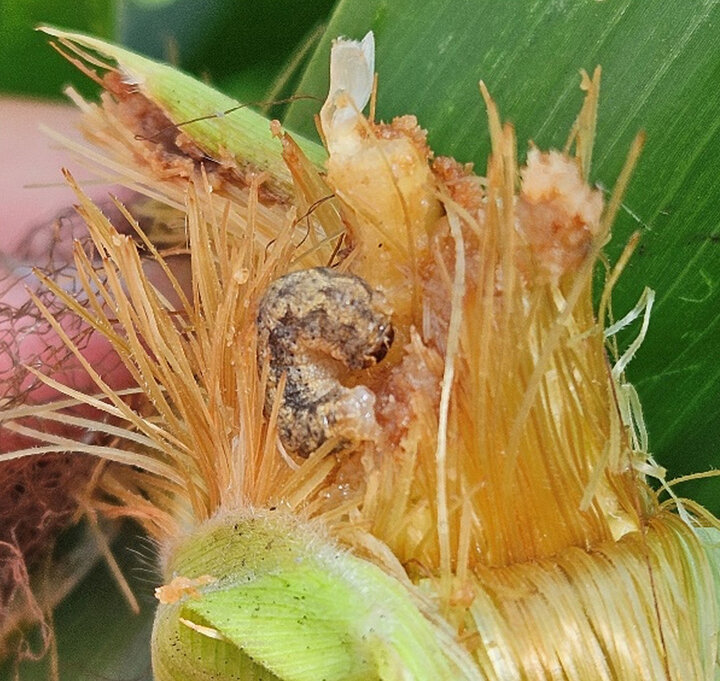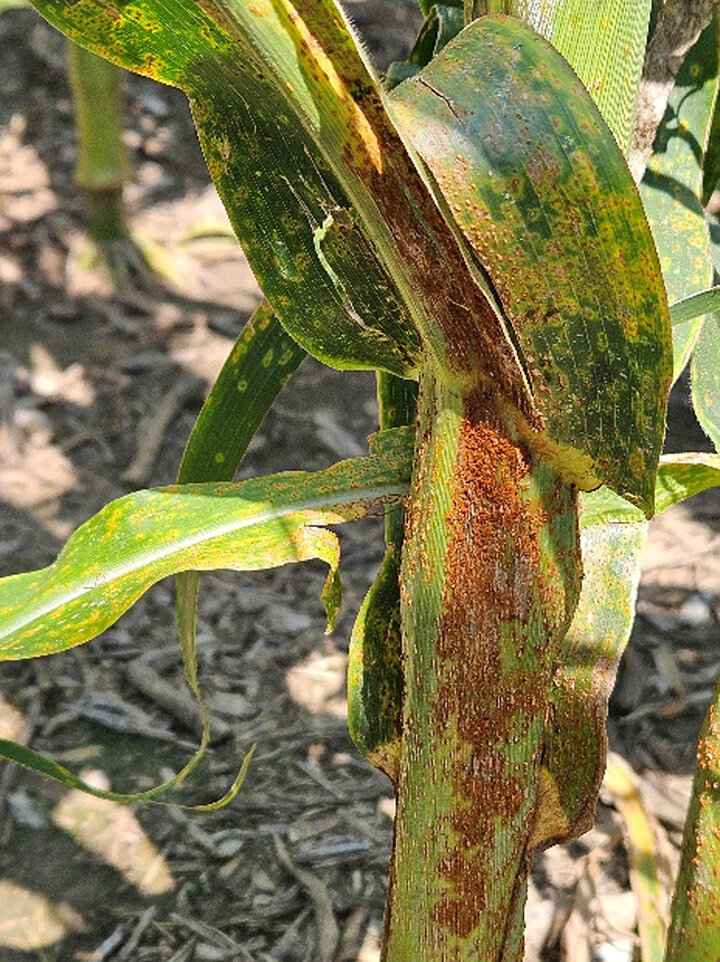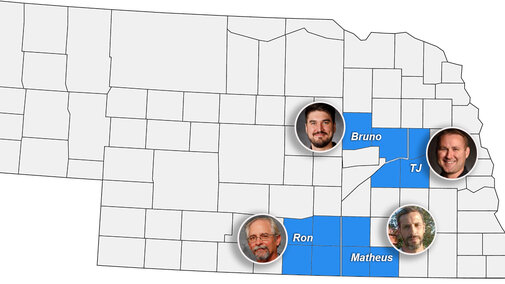Ron Seymour
Extension Educator in Adams, Kearney, Franklin and Webster Counties
Field Survey of Southeast Adams County Aug. 15
The surface soil moisture conditions have improved slightly with a good rain having occurred in the last few days. The subsoil continues to be very dry.
Soybean — Most plants were in the pod fill stages and looked very good. Plants with bacterial blight were found in a couple of fields. Japanese beetles and their damage continue to be common. A few fields had a noticeable number of grasshoppers, but the damage was minimal. Soybean stem borer damaged leaves were found at the edge of several fields. Other insects included stink bugs and green clover worms.
Field corn — Development stages ranged from soft dough to hard dough. The condition of the fields ranged from fair to excellent, with most in the excellent category. Corn diseases were common but not severe. The diseases included southern rust, bacterial leaf streak and northern leaf blight. Western bean cutworm larvae were found at moderate to low infestations. Most larvae were in the final growth stage (Figure 1). One field had a few two spotted spider mite colonies on the lower leaves.

Field Survey of Central and North-central Kearney County Aug. 8
The surface and subsoil moisture were very dry in an unirrigated hay field but quite moist soil was found in a summer harvested wheat field.
Soybean — The plants were in the pod fill stage and were in excellent condition. A few Japanese beetles were noticed causing some defoliation on a number of fields.
Corn — The plant development ranged from milk to hard dough stages. A couple of fields had suffered moderate to severe hail damage, otherwise most fields were in good to excellent condition. Western bean cutworm larvae were found in about 10% of the plants. Quite a few of the plants had low to moderate southern rust infection (Figure 2). Bacterial leaf streak was found in most fields but with low to moderate infection levels.

Matheus Pires de Mello Ribeiro
Extension Educator in Clay, Nuckolls and Thayer Counties
Corn — If not 100% at this point, over 90% of corn in my area has already entered silking stage (R1), and some of the corn is already leaving the silking stage. Out of that, I estimate 60% is at or just past R4, while less than 20% are at R5.
Looking at the data from last year about this time, it seems that we have over 65% of the corn crop looking good or excellent in general, and last year was a little lower (slightly over 50%).
Soybean — The soybean crop situation is similar to corn. Most of the beans have already entered the flowering stages and are developing to maturity. At this point, 70-75% should be on pod formation/full pod stage (R4) and/or beginning seed (R5). The earlier planted soybeans that went in from early April to the first of May could be in the R6 (full seed). Those are the soybeans most developed at this point. Growers that planted late (approximately after May 20) or faced replanting decisions are experiencing a little delay in crop development. Last year at this time, we had less than 60% of soybeans looking good or excellent, and we have 68% estimated in that category for this year.
I would say overall, and regardless of the commodity market prices, both beans and corn are looking promising.
TJ Prochaska
Extension Educator in Colfax, Butler and Polk Counties
Hit and miss showers have targeted the area over the past week, with most areas receiving between a trace and 0.20-inch.
Soybean — A new (for 2024) but familiar pest was observed in the Colfax County area this week — a couple reports of soybean aphid in the area. That pest was also detected at the Eastern Nebraska Research, Extension and Education Center/Ithaca in the last two weeks. Scouting should continue if you believe aphids could be a possible threat at your field site. Please remember, economic threshold is 250 aphids/plant. Natural enemies such as ladybugs have been noted at the impacted sites, which can help hold — perhaps even lower — aphid populations. This may trigger a second scouting event in a few days to confirm if populations are holding or dropping. Many fields are in the R5 stage. Once soybean reaches R6, aphids no longer result in yield impact. If economic threshold is met and natural enemies don’t seem to be controlling populations at your second scouting event, consider soybean marketing and control costs to help determine if an insecticide application fits into your budget.
Bruno Lena
Extension Educator in Platte and Boone Counties
Soil Moisture — Some of the early planted corn is already reaching dent stage, and some of the early soybean plantings are reaching R6, so we’re getting to the time of the year that crop water use is going to start decreasing. For the past two years, weekly crop water use at this time has been 2-2.3 inches per week, and we dropped only one inch last week. It’s kind of amazing to see how weather plays a big impact on crop water use. We have received sufficient rainfall amounts in my area, and a lot of growers have applied less than three inches to save some water for the entire growing season, which is very little compared to the region.

